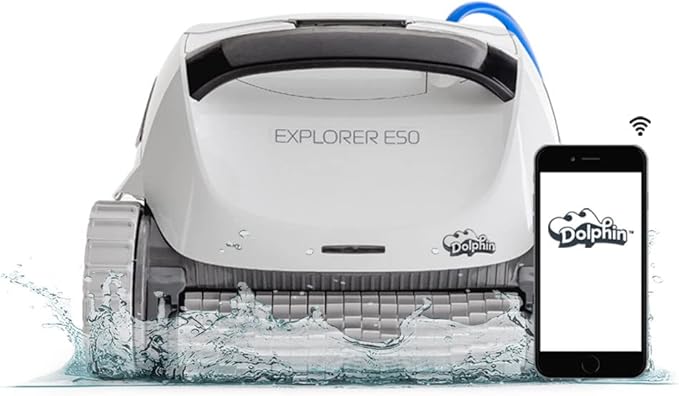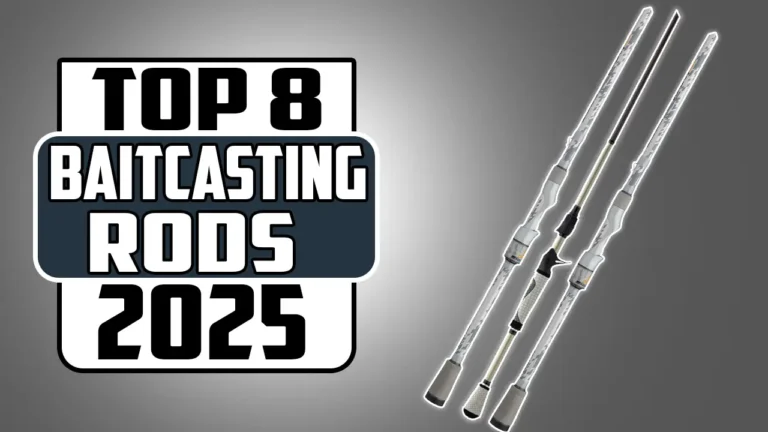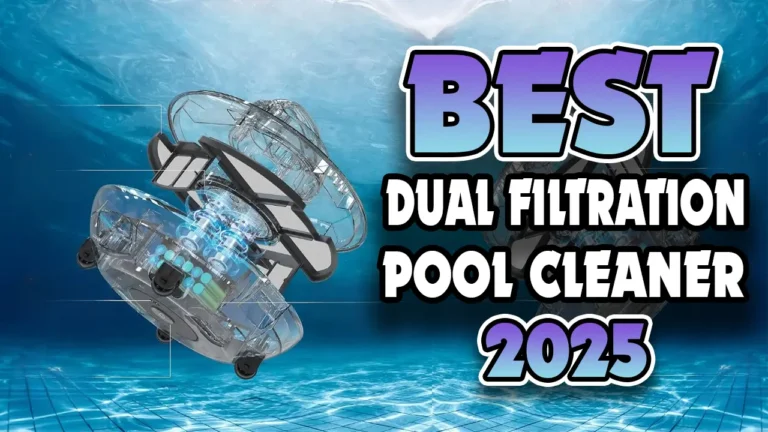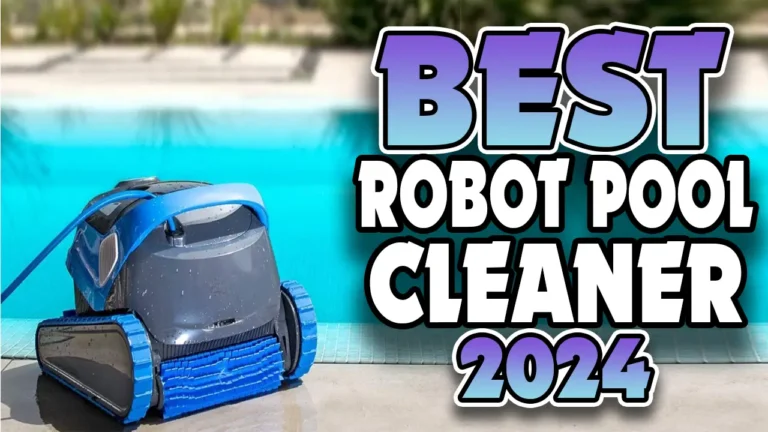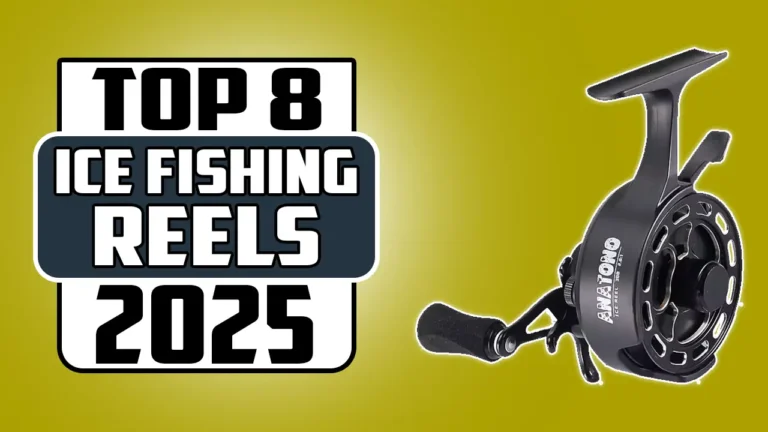Best Cordless Robotic Pool Cleaners In 2024
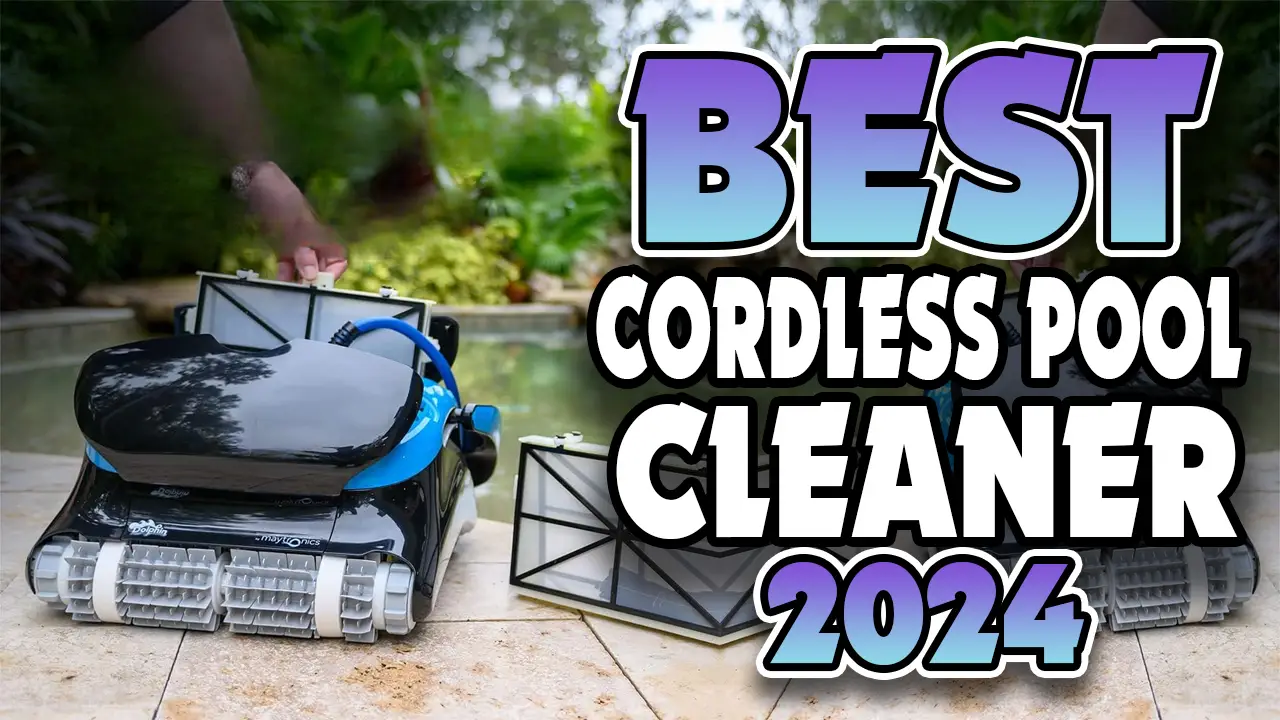
Finding the right pool cleaner for your specific needs can be a daunting task, especially with the vast array of options available. Whether you have an above-ground or in-ground pool, ensuring that every corner is clean can be challenging. This guide offers detailed reviews of the top robotic pool cleaners, emphasizing their unique features, pros, and cons. These insights will help you make an informed decision about the best pool cleaner for your needs.
8. Polaris P70 Robotic Pool Cleaner
Discovering an effective above-ground pool cleaner that handles both coves and the floor can be difficult. We were impressed by the Polaris 7000 Above Ground Pool Cleaner’s powerful suction, which disturbs the water’s surface during use. It can be programmed to clean at specific intervals and times, offering flexibility.
This cleaner can manage a 30-foot-wide pool with its 40-foot-long cable, allowing it to navigate around corners and obstacles. The setup is simple—just attach the power hose. Its rubber tracks help it grip the slopes around your pool’s circumference effectively.
During testing, even after heavy rain, the cleaner efficiently cut through algae at the pool’s bottom. Although powerful, it lacks a clear indicator of when the cleaning cycle is complete. The status light on the control panel turns off once done, but it’s small and easy to miss. We often checked its movement and status light during cleaning.
The filter canister is easy to clean and has a transparent lid to show when it’s full. However, after four months of use, debris became harder to rinse out, requiring manual removal of smaller pieces and hair.
7. Aiper Scuba S1 Pro Robotic Pool Cleaner
The Aiper Scuba S1 Pro is an upgraded version of the Aiper Scuba S1, making it ideal for large pools. It would be our top pick, but its extended cleaning coverage, runtime, and basket size are more than what’s needed for smaller pools, and it’s more expensive than the Scuba S1.
Designed for pools up to 2,150 square feet, this cleaner impressed us from the start. No assembly was required, and the initial battery charge took just one hour. It connected seamlessly to our Wi-Fi network and paired with the Aiper app, which we used to monitor the charge level. It works only with 2.4 GHz Wi-Fi but performed well on our dual-band Orbi mesh network.
Upon being placed in our large gunite pool, it sank to the bottom, oriented itself, and began cleaning. It handled a full cycle, scrubbing the walls before moving to the floor. It picked up fine sand, bamboo leaves, and other debris.
Although it got stuck on a built-in corner seat and wedding cake-style stairs initially, it freed itself and didn’t get stuck in subsequent cleanings. When done, it stopped near a wall, making it easy to lift out with the included hook that attaches to a pool pole.
6. Polaris VRX IQ Plus Smart Robotic Pool Cleaner
For ultimate convenience, the Polaris VRX IQ Plus is Wi-Fi enabled, allowing control and scheduling via the iAquaLink app. Using your smartphone, you can start or stop the cleaner, create customized schedules, and check the filter’s status. This high-end cleaner is suitable for large in-ground pools, with a 70-foot tangle-reducing cable.
During testing in an above-ground pool, we couldn’t assess its wall, step, or waterline-cleaning abilities, but its floor-cleaning capacity impressed us. It learned the pool’s dimensions during the first cycle, enhancing subsequent cleanings.
The four-wheel drive enables it to clean walls, floors, waterlines, and steps. The rear water-cleaning system blows debris off stairs and tight corners for the machine to suck up.
Despite being pricey, its features, like the convenient storage caddy and Easy Lift removal system, justify the cost. Although it’s heavy at 21 pounds, the Easy Lift technology simplifies removal from the pool.
5. Dolphin Explorer E50 Robotic Pool Cleaner
The Dolphin Explorer E50, often dubbed the Ferrari of pool cleaners, is powerful, effective, and user-friendly, though its price reflects its high-end status. It’s corded, so it doesn’t require charging, but it’s limited to 50-foot pools. It’s compatible with all pool liners, including gunite, fiberglass, and vinyl.
To start, plug it in and connect the smartphone app, which is very user-friendly. You can select from several cleaning modes, including floor-only, walls-only, or a combination. There’s also a quick-clean mode for less intensive cleanings. Remote monitoring and cycle alerts are standout features, as is the ability to instruct it to float to the surface for easy retrieval.
While it sometimes got stuck on stairs, it effectively cleaned walls, waterlines, and all debris types with its large filter basket. The basket’s easy-emptying mechanism was particularly convenient.
4. Dolphin Automatic Robotic Pool Cleaner
For large pools or those wanting a cleaner with all the bells and whistles, the Dolphin Nautilus CC Supreme is a solid investment. During testing, it impressed us with its thorough cleaning, handling walls and waterlines as well as floors. Its dual-filter system captures all debris types.
Suitable for in-ground pools up to 50 feet, it takes 1.5 to 3.5 hours to complete a cleaning cycle, depending on your settings. Its powerful scrubbing brushes and smart navigation software provide a deep clean. The tangle-free cable and weekly timer enhance its usability, while the LED indicator shows when the filter is full.
While it couldn’t clean narrow steps, it managed wider sun ledges effectively. The accompanying app was useful for tracking cleaning progress and location in the pool.
3. Polaris Freedom Robotic Pool Cleaner
The Polaris Freedom stands out for its best-in-class cleaning and useful smart connectivity. The iAquaLink app provides constant updates on the robot’s status, including push alerts when cleaning is done. Used every two weeks for three months in an in-ground pool, its performance was consistently impressive.
After initial setup, the cleaner can operate without the app. It’s straightforward—just turn it on, place it in the pool, and let it work. The app offers specialized cleaning modes, but the standard cycle was highly effective.
Maintaining a Wi-Fi connection was easy, though weak networks can be problematic due to water blocking signals. The basic cycle took about three hours, cleaning walls and floors effectively, though it struggled with shallow steps.
2. Wybot Robotic Pool Cleaner
The Wybot Osprey 200 is a great budget option, performing well in both in-ground and above-ground pools. It’s easy to use, making it ideal for smaller pools and lighter-duty work. It costs about $400 less than the Aiper Scuba S1, making it a more affordable choice.
Although it can’t clean walls and has a shorter battery life, it handled our 12 x 30-foot kidney-shaped pool efficiently, cleaning the floor in under an hour. Its battery life is about 50 to 60 minutes, adequate for smaller pools but potentially limiting for larger ones.
1. Aiper Scuba S1 Robotic Pool Cleaner
The Aiper Scuba S1 is our top pick for its excellent performance and simplicity. It effectively cleans walls and floors, with a large filter basket that doesn’t need emptying mid-cycle. Used twice a week for three months in a 10 x 40-foot pool, it consistently covered every area, removing all visible debris.
It lacks smart features but operates well without them, using Aiper’s WavePath 2.0 navigation for efficient cleaning. Though a bit heavy to remove from the pool, it’s manageable and significantly lighter than its Pro counterpart.
Buying Guide for Robotic Pool Cleaners
Key Features to Consider
Pool Size and Type
The size and type of your pool are crucial factors when choosing a robotic pool cleaner. Above-ground and in-ground pools require different capabilities. Ensure the cleaner you choose can handle the dimensions of your pool and is suitable for your pool’s material, whether it’s vinyl, fiberglass, or gunite.
Cleaning Coverage
Robotic pool cleaners vary in their cleaning coverage. Some can clean only the floor, while others handle walls, waterlines, and even steps. Choose a model that matches your cleaning needs, especially if your pool has complex shapes or numerous features.
Suction Power and Debris Handling
Consider the suction power and the cleaner’s ability to handle different types of debris. If your pool frequently collects leaves, algae, or fine dirt, opt for a model with strong suction and a large filter basket to avoid frequent emptying.
Smart Features and Connectivity
Smart features like Wi-Fi connectivity, smartphone apps, and programmable schedules add convenience. These features allow you to control and monitor your cleaner remotely, set cleaning schedules, and receive notifications when the cycle is complete or the filter needs cleaning.
Cable Length and Battery Life
Ensure the cleaner has a sufficient cable length or battery life to cover your entire pool. Tangle-free cables and long battery life are essential for uninterrupted cleaning sessions, especially in larger pools.
Maintenance and Ease of Use
Setup and Operation
Choose a robotic pool cleaner that is easy to set up and operate. Models that require minimal assembly and have intuitive controls will save you time and effort. Look for user-friendly apps if the cleaner offers smart connectivity.
Filter Cleaning and Maintenance
Consider how easy it is to clean and maintain the filter. Transparent lids and easy-access canisters simplify the process. Ensure that debris removal doesn’t require too much manual effort, especially if you plan to use the cleaner frequently.
Durability and Warranty
Invest in a durable pool cleaner made from high-quality materials. Check the warranty offered by the manufacturer, as a good warranty can provide peace of mind and protect your investment in case of defects or malfunctions.
FAQs
How often should I run my robotic pool cleaner? The frequency depends on your pool usage and the surrounding environment. For pools with frequent use or lots of debris, running the cleaner two to three times a week is ideal. For less frequently used pools, once a week may suffice.
Can I leave my robotic pool cleaner in the pool all the time? It’s generally not recommended to leave the cleaner in the pool constantly. Prolonged exposure to water and pool chemicals can reduce the cleaner’s lifespan. Remove and store it according to the manufacturer’s instructions.
Do robotic pool cleaners work on all pool surfaces? Most robotic pool cleaners are designed to work on various surfaces, including vinyl, fiberglass, and gunite. However, always check the manufacturer’s specifications to ensure compatibility with your pool surface.
Why does my robotic pool cleaner get stuck? Cleaners can get stuck due to obstacles like steps, ladders, or sharp corners. Ensure your cleaner is designed to handle these features, and regularly check and clear any potential obstructions in your pool.
How do I clean the filter basket? To clean the filter basket, remove it from the cleaner and empty the debris. Rinse it with a garden hose or tap water to remove any remaining dirt. For stubborn debris, you might need to use a brush or your hand.
What should I do if my cleaner isn’t working properly? First, consult the user manual for troubleshooting tips. Common issues can often be resolved by checking the power supply, ensuring the filter is clean, and inspecting the cable for tangles. If the problem persists, contact the manufacturer for support.
Can robotic pool cleaners handle large debris? While many cleaners can handle large debris, it’s essential to check the specifications. Some models have larger filter baskets and stronger suction to manage bigger debris like leaves and twigs. Regularly emptying the filter helps maintain optimal performance.
Are robotic pool cleaners energy-efficient? Yes, robotic pool cleaners are generally energy-efficient compared to traditional cleaning methods. They use low voltage and are designed to operate independently, saving energy and reducing overall pool maintenance costs.
What maintenance do robotic pool cleaners require? Regular maintenance includes cleaning the filter basket, checking for wear and tear, and inspecting the power cord for damage. Following the manufacturer’s maintenance guidelines ensures longevity and efficient performance.
Conclusion
Choosing the right robotic pool cleaner involves considering your pool’s specific needs, the cleaner’s features, and maintenance requirements. By understanding these factors, you can invest in a pool cleaner that keeps your pool sparkling clean with minimal effort, allowing you more time to enjoy your pool.




